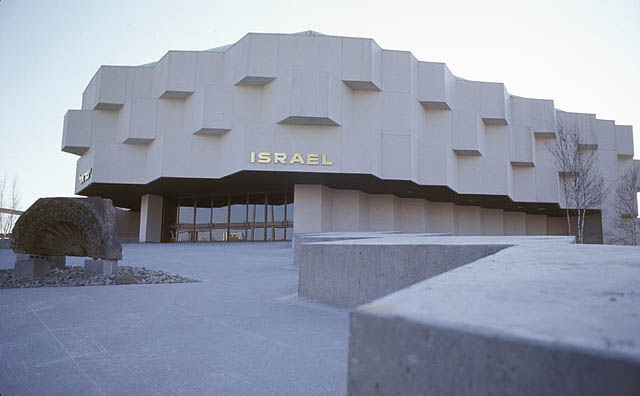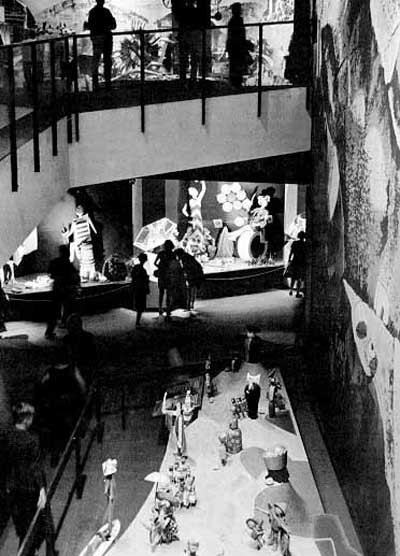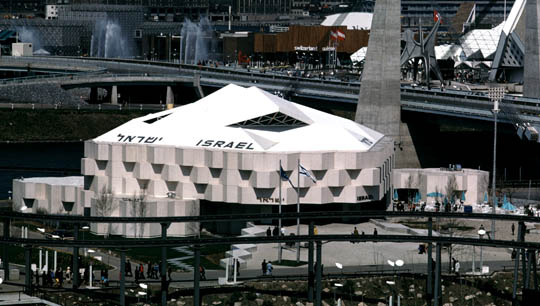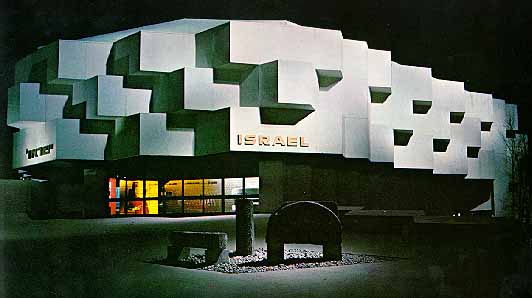The Pavilion of Israel
 Israel's pavilion at Expo 67 was a white, windowless structure. Located on Île Notre Dame, near the Expo-Express station, the 2-level pavilion featured modern cubist walls and a geometrically patterned roof. A landscaped Biblical garden surrounded the building.
Israel's pavilion at Expo 67 was a white, windowless structure. Located on Île Notre Dame, near the Expo-Express station, the 2-level pavilion featured modern cubist walls and a geometrically patterned roof. A landscaped Biblical garden surrounded the building. In the entrance hall of the pavilion, visitors were introduced to Ancient Israel through an exhibit of archeological treasures, the crowning jewel of which was a complete Dead Sea Scroll.
In the entrance hall of the pavilion, visitors were introduced to Ancient Israel through an exhibit of archeological treasures, the crowning jewel of which was a complete Dead Sea Scroll.Displays encased in the walls of a ramp leading to the second floor described the destruction of ancient Israel. Near the top of the ramp were vast figures that expressed the Jewish longing to return to Israel.
 A section on the second floor described early Israeli settlements. Another section contained a sombre exhibit of the holocaust. From the gloom, visitors then emerged into a bright hall of photographs showing refugees returning to the reborn state of Israel in 1948. The challenges that faced the reborn state were discussed next, in the Hall of Modern Israel.
A section on the second floor described early Israeli settlements. Another section contained a sombre exhibit of the holocaust. From the gloom, visitors then emerged into a bright hall of photographs showing refugees returning to the reborn state of Israel in 1948. The challenges that faced the reborn state were discussed next, in the Hall of Modern Israel.In an adjacent circular area, short films on Israel's cultural heritage and the Hebrew language were projected on a revolving drum. Throughout the area, pale colors and bright lighting recalled Israel's hot, dry climate.
 Another ramp lead back down to the ground floor, to the Beauty of Israel Hall. Here, visitors could buy Israeli products, books and stamps, and obtain tourist information. Next to the hall was a 250-seat auditorium that was used for film screening and song and dance performances.
Another ramp lead back down to the ground floor, to the Beauty of Israel Hall. Here, visitors could buy Israeli products, books and stamps, and obtain tourist information. Next to the hall was a 250-seat auditorium that was used for film screening and song and dance performances.Near the pavilion's exit was the only kosher restaurant at Expo 67.

images: (1) alamedainfo.com
(2) library and archives canada
(3-4-5) westland.net/expo67
Labels: pavilions-a-gogo

0 Comments:
Post a Comment